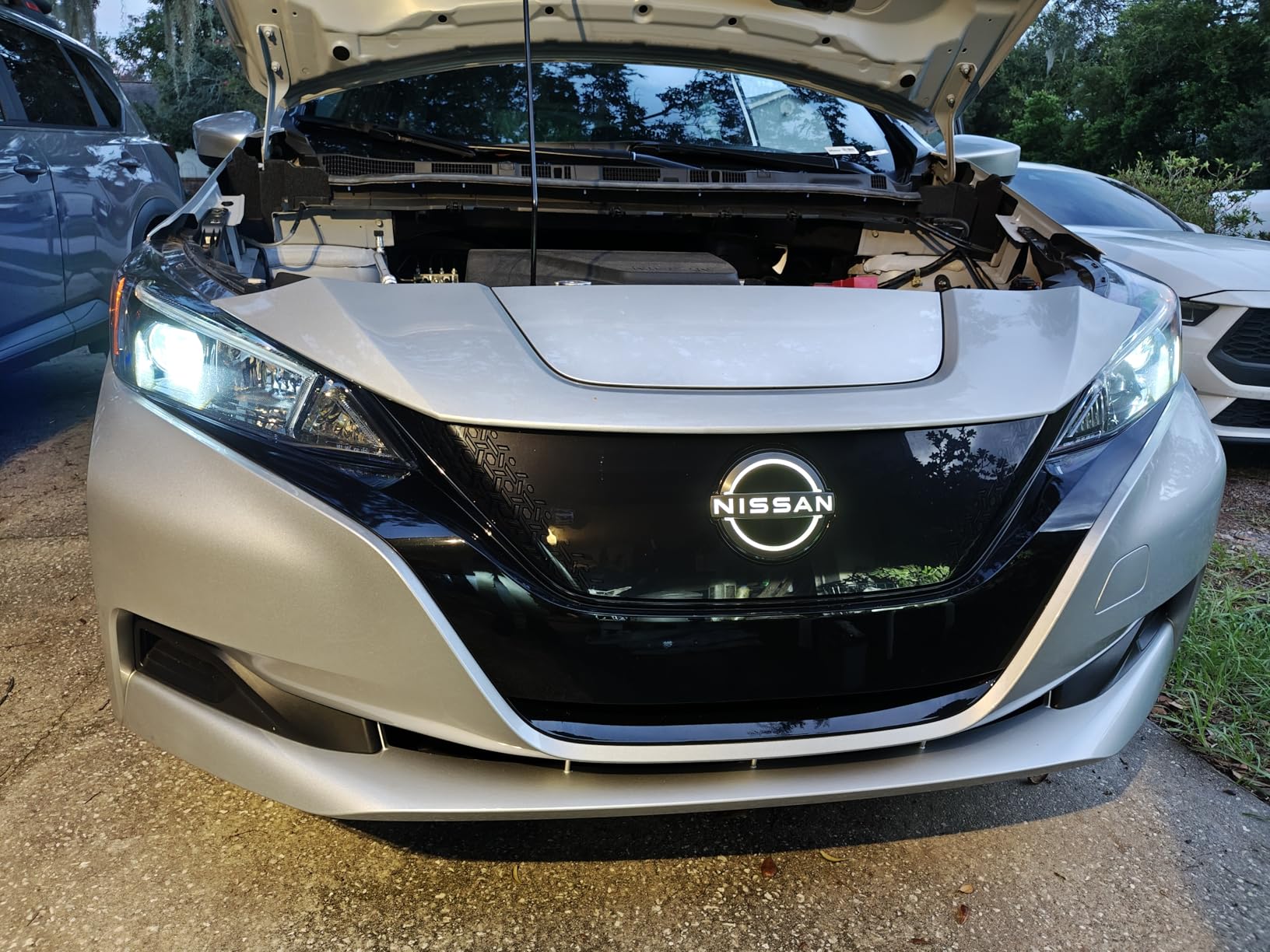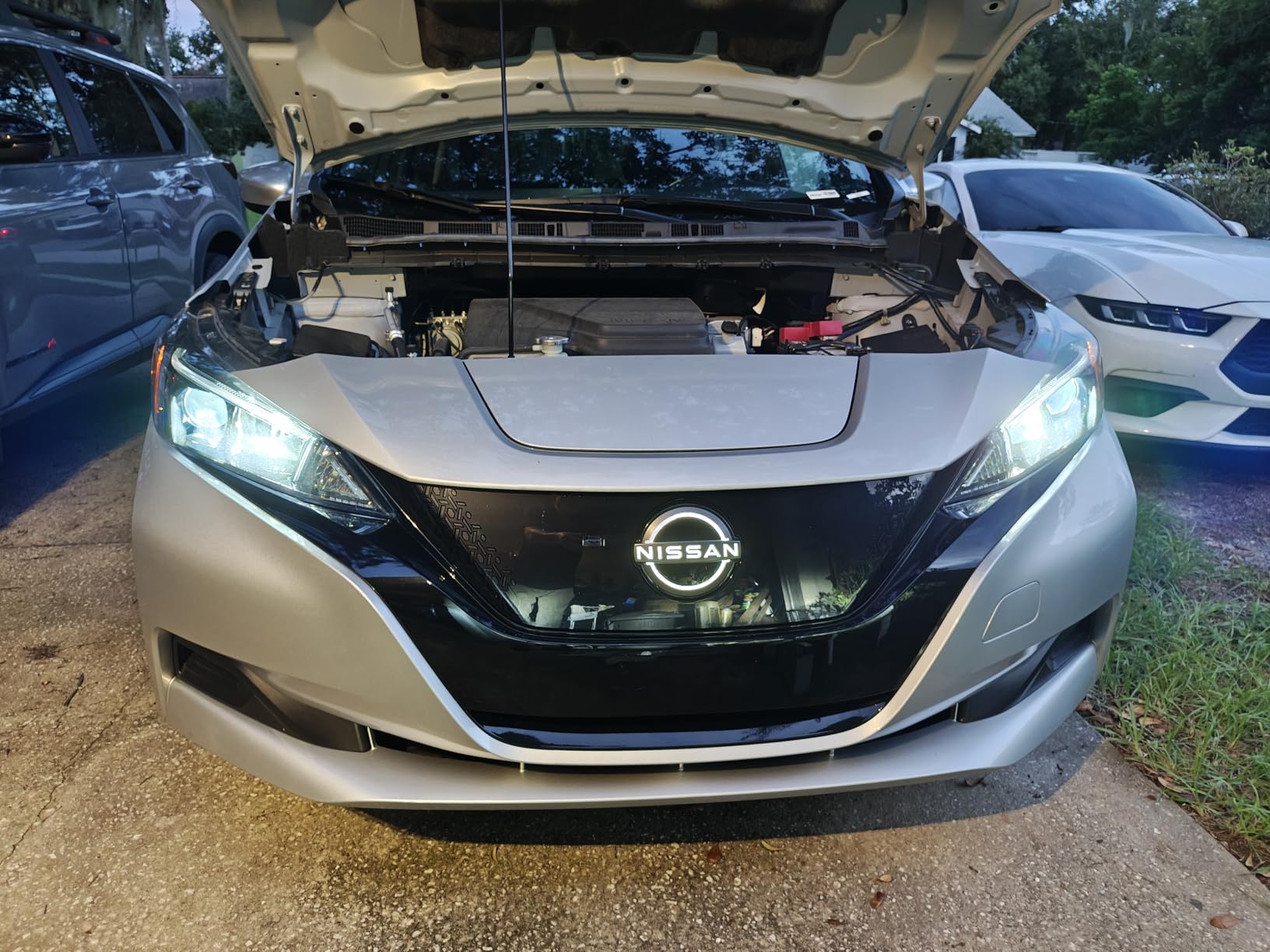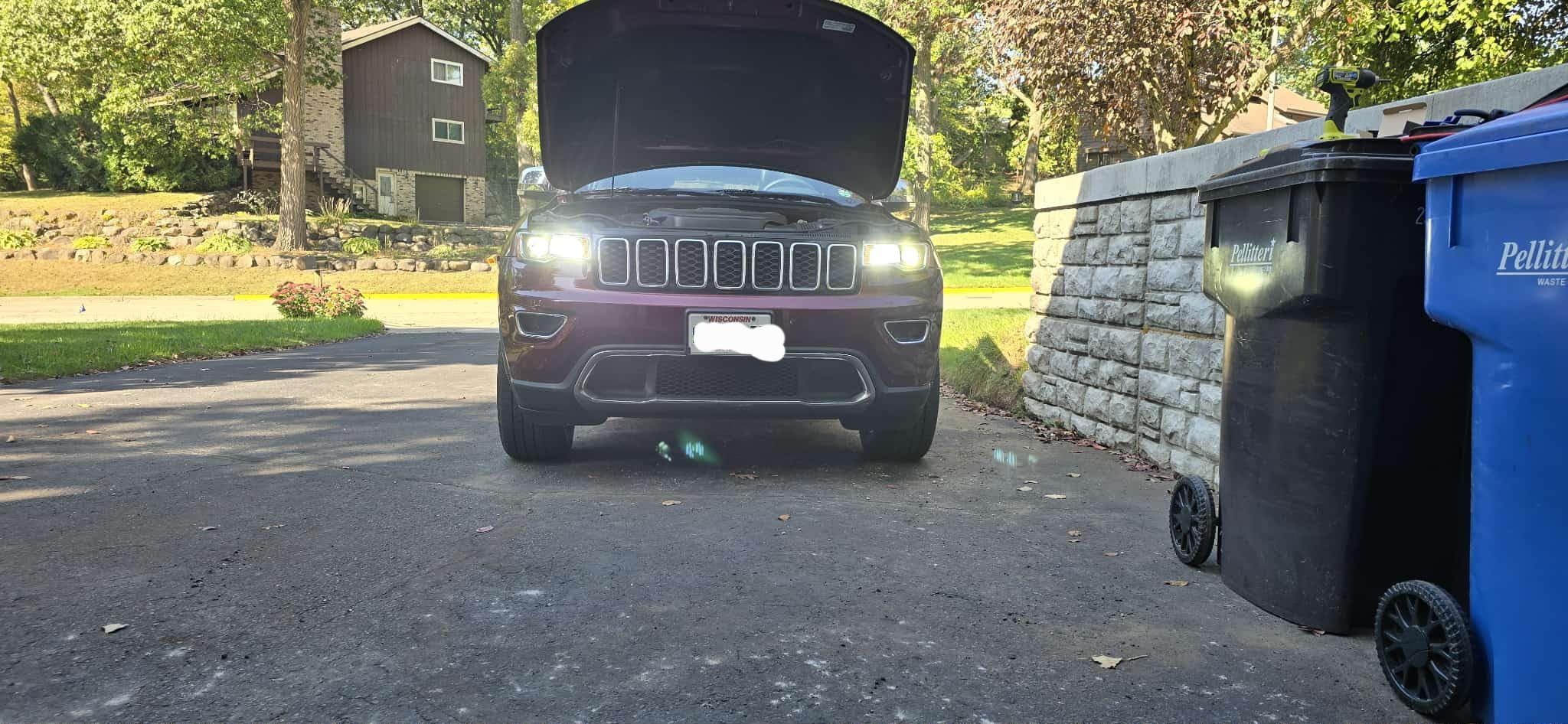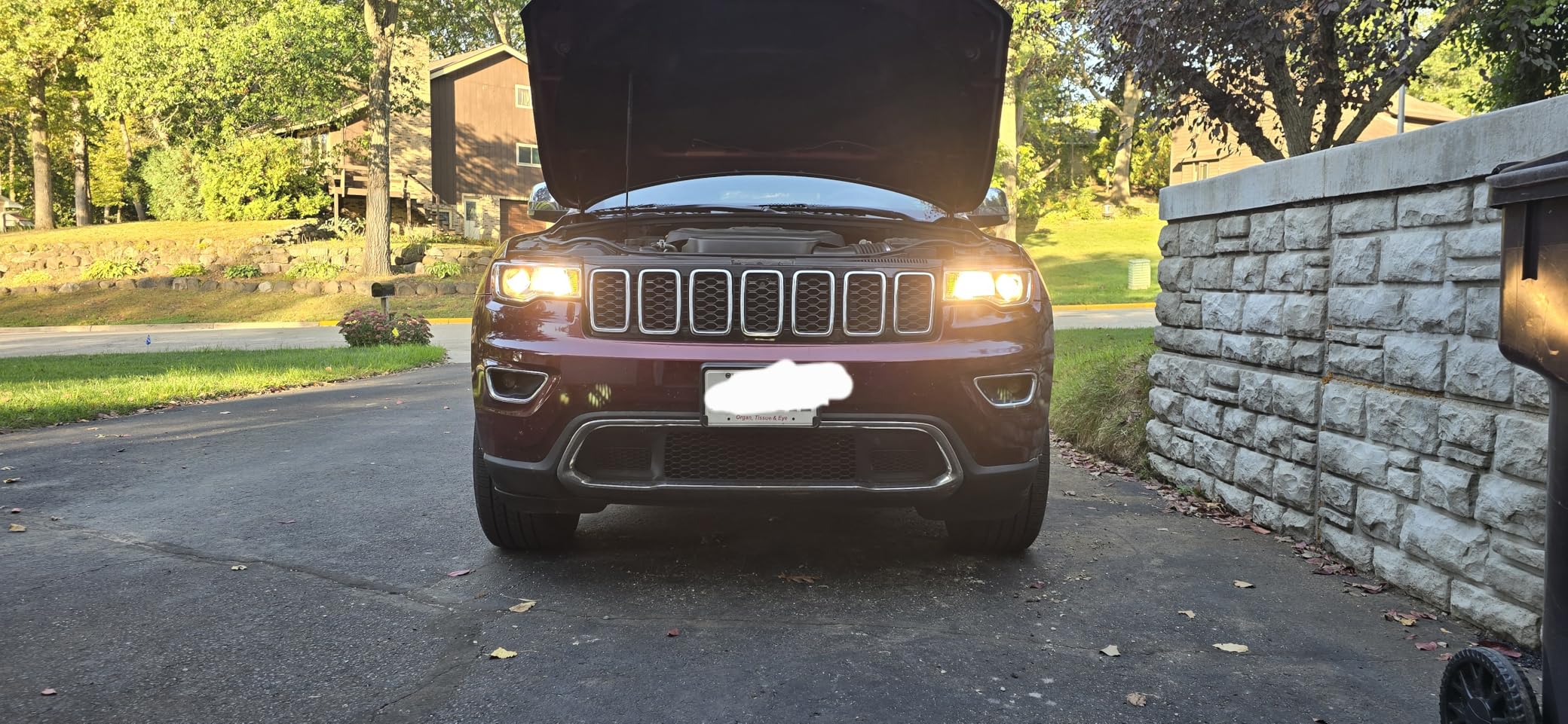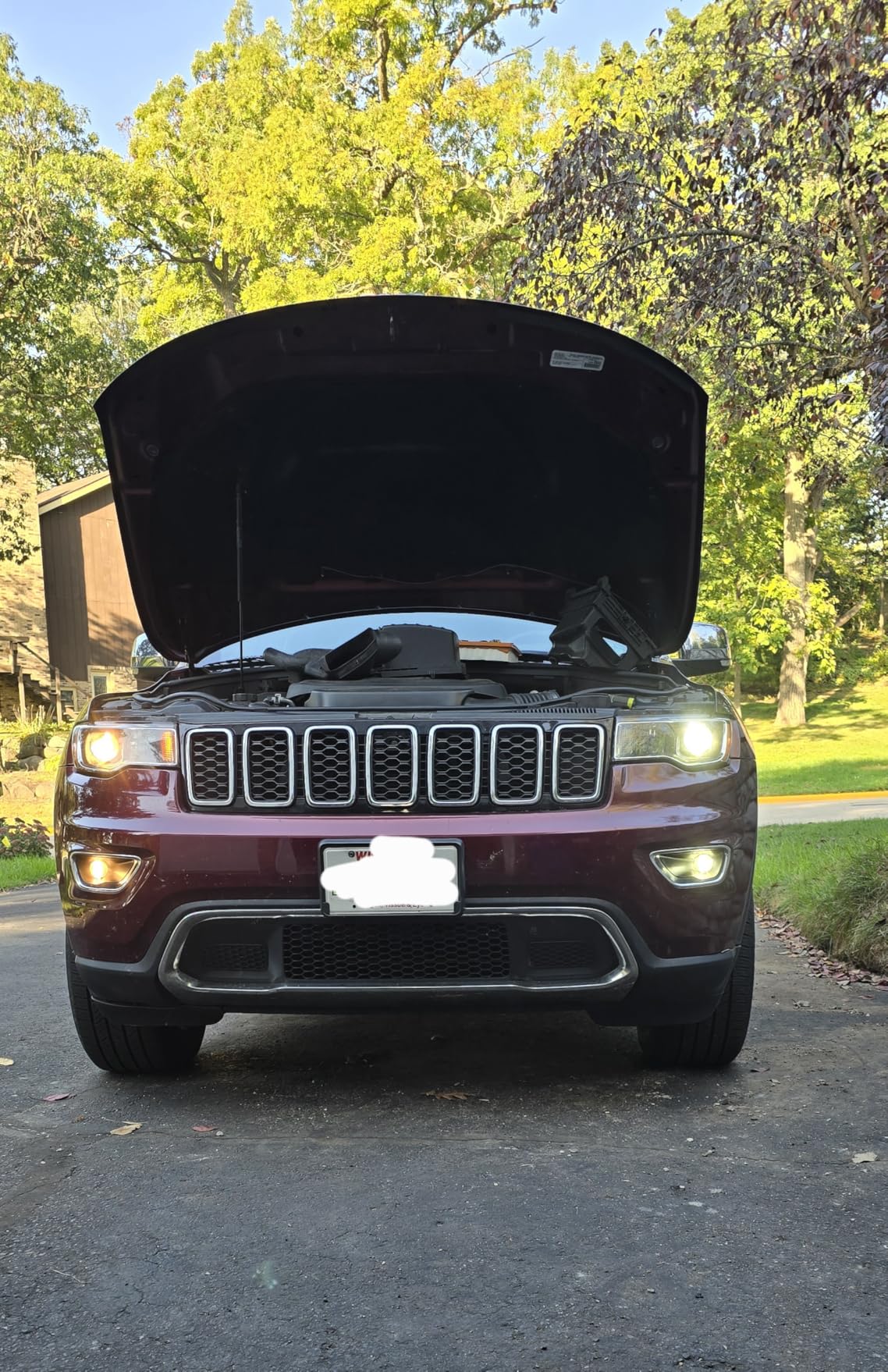Ever been driving in thick fog and wondered which lights you should actually be using? You're not alone! While most of us know how to flip on our headlights, those fog lights often leave people scratching their heads.
In this guide, I'll break down exactly what makes fog lights different from your everyday headlights, when you should be using each type, and how to keep them working properly. No technical jargon - just practical advice to keep you safe on the road when visibility gets tough!
Fog Lights vs. Headlights: What's the Difference
Headlights and fog lights are two distinct features of your vehicle. Though they both enable you to see while driving, they operate in different manners and are intended for different situations.
| Feature | Fog Lights | Headlights |
| Mounting Position | Low (bumper or below headlights) | High (hood level) |
| Beam Pattern | Wide, flat beam with sharp cutoff | Focused beam projecting far ahead |
| Effective Range | Short range (50-100 feet) | Long range (200-350 feet) |
| Light Color | Often selective yellow (sometimes white) | Typically white or slight yellow |
| Primary Purpose | Cutting through fog, rain, snow | General illumination for normal driving |
| Legal Status | Optional accessory in most regions | Required equipment on all vehicles |
| Glare in Poor Conditions | Minimal glare in fog/precipitation | Can create significant glare |
| Use with Other Lights | Used with low beams in poor visibility | Used alone or with fog lights |
Fog lights work better than headlights in bad weather like fog, rain, and snow because they don't create as much glare and can light up the road right in front of your car. Headlights are better than fog lights for normal driving because they shine farther ahead and light up more of the road.

When to Use Fog Lights vs. Headlights
Alternating between headlights and fog lights at the right moment makes road travel safer. Both light types are best in different circumstances. Using the appropriate lights allows you to see and prevent problems for other drivers. Below is when to use each type of light in different conditions:
| Driving Condition | Fog Lights | Headlights |
| Dense Fog | Highly effective - Use with low beams | High beams worsen visibility; low beams alone may create glare |
| Heavy Rain/Snow | Recommended - Reduces reflection from water particles | Use low beams; avoid high beams which create glare |
| Clear Night Driving | Not recommended - Too short-range | Essential - Use low beams in traffic, high beams on empty roads |
| Daytime Clear Conditions | Generally unnecessary | Daytime running lights or low beams enhance visibility |
| Sunrise/Sunset | Sometimes used for increased visibility | Low beams recommended |
| Winding Roads | Can help illuminate road edges | Primary light source - essential for seeing ahead |
Headlights work better for everyday driving and seeing far ahead on clear nights, while fog lights work better in bad weather like fog, heavy rain, and snow where glare is a problem. Using fog lights together with low-beam headlights gives you the best visibility in foggy conditions, but for normal driving, your regular headlights are the better choice.
The Downsides of Improper Fog Light Use
While fog lights are designed to improve safety in specific conditions, using them incorrectly can create several problems that put you and other drivers at risk. Here's why using fog lights at the wrong time or in the wrong way can be problematic:
1. Blinding Other Drivers
One of the most significant problems with the improper use of fog lights is that it can cause other drivers to be blinded. Because fog lights emit a wide beam pattern, they can cause a great deal of glare on approaching traffic if they are improperly used or pointed. Because of this, most regions have specific laws regarding when and how fog lights should be utilized.
2. Wasted Battery Drain
Operating unnecessary lights also puts an additional burden on your vehicle's electrical system. Though current vehicles can normally do so without protest, it's still a wasteful energy use, especially important in electric or hybrid vehicles where battery saving is critical.
3. Reduced Visibility in Clear Conditions
Ironically, fog lights can actually lower your visibility when used in dry conditions. The wide, short-range beam pattern can produce distracting reflections off reflective surfaces and road signs, possibly diverting your attention from hazards further away that your headlights would otherwise light up.
The Downsides of Improper Headlight Use
Using your headlights incorrectly can cause problems for both you and other drivers. Here's why it matters:
1. Blinding Other Drivers
When you don't dim your high beams as other cars approach, you can temporarily blind those drivers. This is dangerous for everyone on the road. Even regular low beams can cause problems if they're too bright or if your truck or SUV sits higher than other vehicles.
2. Making Your Own Vision Worse
In rain, snow, or fog, high beams actually impair your ability to see. The very bright light bounces off water droplets in the air and creates a wall of glare right ahead of you. That is why fog lights, which cast low and broad, are better in bad weather.
3. Draining Your Battery
While most newer vehicles have no problems with using headlights, leaving on high beams when you don't need them burns energy. This is most of concern to electric and hybrid cars, where using every bit of energy makes a difference in how far you get.
4. Wearing Out Bulbs Faster
Leaving high beams on at all times when low beams will lower the lifespan of your bulbs. This means higher replacement costs and chances of running times when you will have to drive a burned-out light.
5. Getting Tickets
Most places have laws about when to use headlights and when to dip your high beams. Use them improperly, and you'll be pulled over and fined. If the improper use of headlamps leads to an accident, you can look forward to even harsher punishment.

How to Use Fog Lights Properly
Fog lights are special tools for specific conditions, and using them correctly keeps everyone safer on the road. Here's how to use fog lights properly:
- Turn them on only in poor visibility - Use fog lights when visibility drops below 100 meters (about 328 feet) due to fog, heavy rain, or snow.
- Use with low beams - Pair fog lights with your low beam headlights, never with high beams.
- Turn them off when conditions improve - As soon as visibility gets better, turn off your fog lights to avoid blinding other drivers.
- Check your dashboard - Most vehicles have a green or yellow symbol that lights up when fog lights are on.
- Adjust if possible - Some fog lights can be adjusted. Make sure they're aimed slightly downward and toward the edges of the road.
- Follow local laws - Many places have specific rules about fog light use. Some areas prohibit using them in clear conditions.
- Reduce speed - Even with fog lights, drive slower in poor visibility conditions.
- Don't rely only on fog lights - They supplement your headlights but shouldn't be your only light source.
How to Use Headlights Properly
Headlights are your main lighting system and using them correctly is essential for safe driving. Here's how to use headlights properly:
- Use low beams in normal conditions - For regular night driving, especially with oncoming traffic or when following other vehicles.
- Switch to high beams when appropriate - Use high beams on dark, empty roads with no oncoming traffic or vehicles ahead.
- Dim for oncoming traffic - Switch from high to low beams when you see oncoming vehicles to avoid blinding other drivers.
- Turn on at dusk and dawn - Use headlights during twilight hours when visibility starts to decrease.
- Use during daytime in poor conditions - Turn on headlights during daytime rain, fog, or snow to increase your visibility to others.
- Keep them clean - Dirty headlights can reduce light output by up to 50%. Clean them regularly.
- Check alignment - Improperly aligned headlights can blind others and reduce your visibility. Have them checked periodically.
- Replace bulbs in pairs - When one headlight burns out, replace both for consistent lighting.
- Use daytime running lights - If your vehicle has them, these increase your visibility to others during daylight hours.
- Don't overuse high beams - Excessive use can blind other drivers and actually reduce your visibility in fog or snow.
Can You Run Fog Lights and Headlights Together?
Yes, you can and should run fog lights together with low-beam headlights in poor visibility conditions. This combination provides the best visibility when driving in fog, heavy rain, or snow. The low-beam headlights help you see the road ahead while the fog lights illuminate the area directly in front of your vehicle with minimal glare.
However, you should never use fog lights with high-beam headlights. High beams produce significant upward light that reflects off fog or precipitation particles, creating glare that actually reduces visibility. This combination defeats the purpose of fog lights and can be dangerous.
Most modern vehicles are designed to allow fog lights to work alongside low beams, with dashboard controls that let you activate both systems simultaneously. In many places, this is the legally required way to use fog lights—as a supplement to, not a replacement for, your regular headlights.
Can I Use My Fog Lights If My Headlight Is Out?
No, you cannot legally use fog lights as a replacement for a broken headlight. Fog lights are designed to supplement your headlights, not replace them. Driving with a headlight out and only fog lights on is:
- Illegal in most places - Traffic laws require functioning headlights on both sides of your vehicle. Fog lights don't meet the legal requirements for primary illumination.
- Unsafe for driving - Fog lights have a different beam pattern that illuminates a shorter distance and doesn't provide adequate visibility for normal driving conditions.
- Confusing to other drivers - Other road users may misinterpret your vehicle's position or direction when you're not using proper headlights.
- Potentially dangerous - The limited range and different light pattern of fog lights can leave large areas of the road ahead inadequately lit.
If you have a headlight out, the proper solution is to replace it as soon as possible. Many auto parts stores offer same-day replacement bulbs and some can even help you install them. Until you can fix your headlight, it's safest to drive only during daylight hours if possible.
Using Your Fog Lights the Right Way for Safety
Fog lights help when regular headlights create too much glare in bad weather like fog, heavy rain, or snow. For safety, turn on fog lights along with your low beams (never high beams) when you can't see far ahead.
Keep your fog lights working well by cleaning them often, making sure they point low at the road, and replacing burnt-out bulbs. This helps you see better when driving conditions are bad.
In the future, cars will have smarter fog lights that change automatically based on weather and road conditions, making driving safer and easier for everyone.
Fog Lights and Headlights: Frequently Asked Questions
Q1: Can I leave my fog lights on all the time?
No. Fog lights are designed to be used in areas with poor visibility, such as fog, heavy rain, or snow. Using them in good visibility is illegal in most places because they can blind other motorists. Turn them off when the conditions improve.
Q2: What headlights should I use for regular night driving?
Use low beams for normal night driving, especially where there are streetlights or other traffic present. Save high beams for dark, empty roads with no other traffic. Always switch to low beams when you see other traffic approaching or if you are behind someone.
Q3: What lights should I use during foggy or rainy daytime driving?
Turn on both your low-beam headlights and fog lights during poor daytime visibility due to fog, heavy rain, or snow. Never use high beams when driving in fog. This blend increases your visibility while making your vehicle visible to other motorists.
Q4: Is it okay to drive with fog lights on at night in clear weather?
No. Use fog lights only at nighttime when the weather is bad. Fog lights on clear night driving create dangerous glare for other drivers and are unlawful in most jurisdictions.
Q5: When is it appropriate to use high beam headlights?
Use high beams only on dark roads at night when there are no cars within about 500 feet ahead of you or approaching from the opposite direction. Switch back to low beams immediately when you see another vehicle to avoid blinding other drivers.
Q6: When should I never use fog lights?
Never utilize fog lights during clear weather, good visibility, close behind another car, or coming towards approaching traffic even in fog. Rear fog lights should only be used in severe low visibility conditions as they are very bright and could distract other drivers.
Q7: Are fog light bulbs and headlight bulbs interchangeable?
No. Fog lamp bulbs and headlight bulbs are not interchangeable and cannot be swapped. They have different specifications, a different beam pattern, and sometimes a different color (the fog lights are typically yellow-colored). Always use the proper replacement bulb type recommended in your owner's manual.
Q8: Can I use fog lights as daytime running lights?
No. Some motorists do this, but fog lights are not daytime running lights. This is against the law in most places, wastes energy, and creates unnecessary glare. New vehicles have special daytime running lights that use less energy and are properly aimed for daytime visibility.
